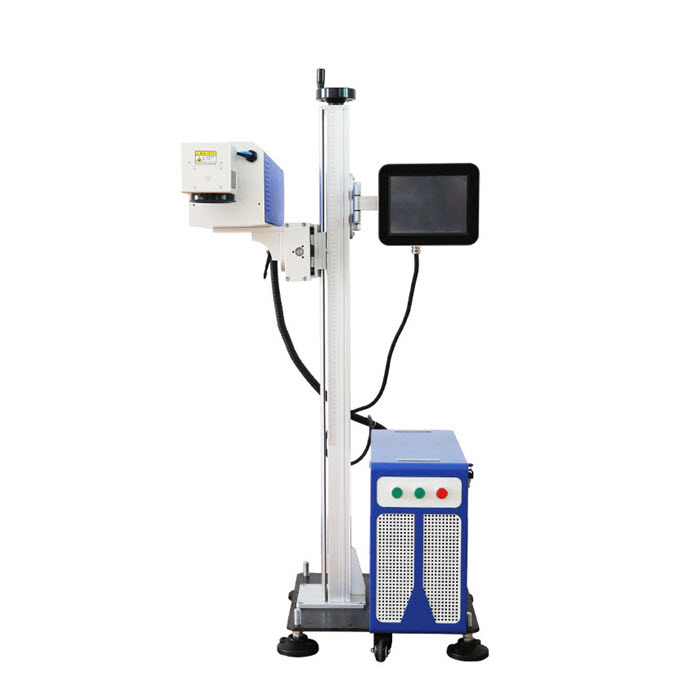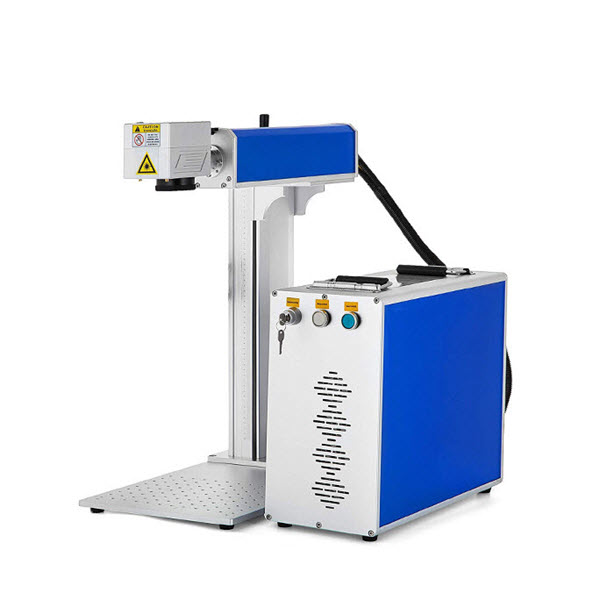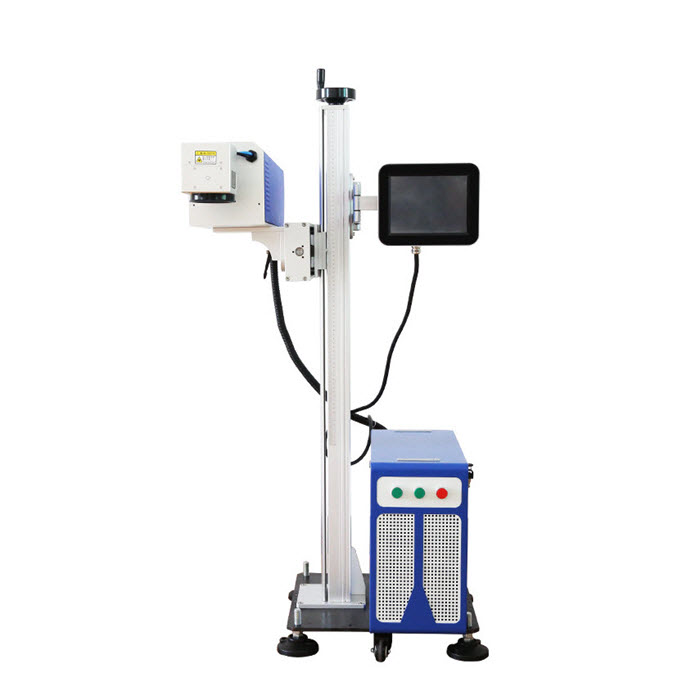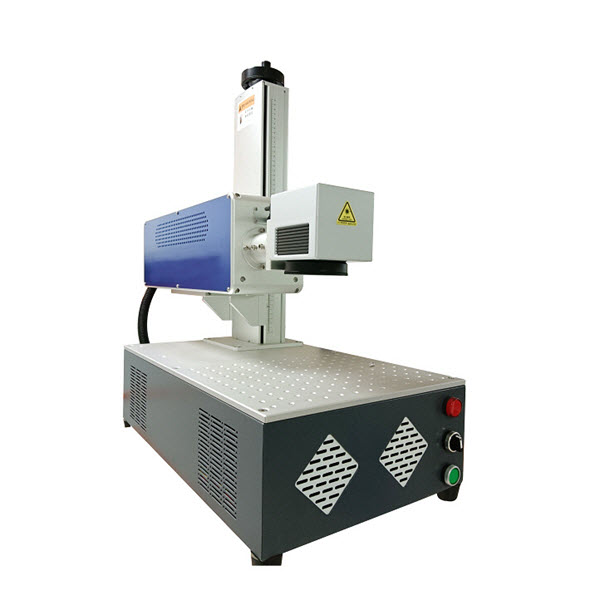
- Home > News > Industry News
Differences Between Dynamic Flying Laser Marking and Static Laser Marking
2025-09-11With the continuous advancement of laser marking technology, its application has penetrated deeply into all areas of the manufacturing industry. Currently, product identification such as brand logos, company names, model specifications, patent information, production dates, batch numbers, barcodes, and QR codes are increasingly being permanently marked with lasers. These lasers are widely recognized for their high precision, strong anti-counterfeiting properties, and excellent durability. Driven by this trend, traditional static marking has gradually evolved towards efficient automation, and the flying laser marking systems have emerged and rapidly gained popularity. This technology can be seamlessly integrated with production lines, achieving high-speed dynamic marking. It is widely used in a variety of continuous production scenarios such as wire and cable, food and beverage packaging, plastic pipes, and pharmaceutical products, and has become a standard feature of modern industrial intelligent marking.
Dynamic Flying Laser Marking
On-the-fly laser marking and static laser marking are two marking technologies with different operating modes. Their core difference lies in whether they are integrated with automated production lines. On-the-fly laser marking is an efficient method for applying surface coding in real time while products are moving at a constant speed along the production line. Specifically, workpieces are placed on a conveyor belt and automatically transported to the laser marking area along the assembly line. The equipment, triggered by sensors, accurately completes the marking process, eliminating the need for human intervention and fully demonstrating the advantages of integrated industrial automation. In contrast, static laser marking is a semi-automatic method, requiring an operator to manually place the workpiece on a fixed workbench, start the equipment, complete the marking, and then manually remove it. This method is suitable for small-batch or non-continuous production scenarios.

Despite their operational differences, both methods share the advantages of laser marking: the resulting mark is visually distinct and has a perceptible tactile texture. It is also permanent, difficult to erase or tamper with, and offers excellent anti-counterfeiting and anti-counterfeiting features. It can meet diverse product marking needs and is particularly well-suited for automated production processes and marking on surfaces with unusual materials (such as curved and irregular surfaces).
With its high speed, high efficiency, and high integration, the flying laser marking system has become an important component of modern intelligent manufacturing. It not only significantly improves the marking cycle, reduces manual participation, and lowers labor costs, but also can be seamlessly integrated into existing production lines, enabling continuous operation without adding additional positions, greatly improving overall production efficiency. Online flying laser marking equipment is usually equipped with powerful graphics editing and text typesetting functions, supporting the automatic generation and dynamic updating of information such as QR codes, barcodes, date batch numbers, and serial numbers. At the same time, the equipment provides an open intelligent control interface that can flexibly connect to various automation devices and sensor systems. Combined with a customizable software platform, it can quickly adjust parameters and functions according to the needs of different production lines and adapt to changing industrial application scenarios.
Static Laser Marking
Static laser marking machines typically operate in a semi-automatic mode, relying on manual loading and unloading. To ensure continuous production, dedicated personnel are often required, increasing both manpower and job requirements. Despite this, they can still achieve high levels of marking accuracy and stability. In contrast, flying laser marking systems, as highly integrated automation solutions, have more stringent hardware requirements and significantly higher overall performance standards than static equipment.

Main Differences Between Flying Laser Marker and Static Laser Marker in Components
The core differences between the two lie in three key components: the laser, the galvanometer system, and the control software. To achieve high-speed dynamic marking, a flying laser marking machine must be equipped with a higher-specification hardware combination: the laser must have faster response speeds and more stable pulse output capabilities; the galvanometer system requires a higher scanning rate and precise trajectory control; and the control software must support real-time data processing, dynamic synchronous triggering, and high-speed parsing of complex graphics. Therefore, the overall configuration of the flying marking equipment falls into the "high-end" category to ensure clear and complete marking even during high-speed product movement.
Marking cycle time is a key performance metric for flying laser marking machines and is directly related to its ability to match production line cycle times. This performance is primarily influenced by the following factors:
The galvanometer system's latency parameters: including startup delay, positioning delay, and return delay. The lower the latency, the faster the response;
The control card's data processing and transmission efficiency: This determines whether the image information can be quickly transmitted to the galvanometer system;
The galvanometer's jump speed and scanning speed: This directly affects the time required to mark a single character or QR code.
Precisely because of these high-performance requirements, internationally renowned galvanometer brands have dominated the high-end manufacturing sector, leveraging their superior dynamic response, long-term stability, and precision control capabilities. Common international brands such as SCANLAB (Germany), RAYLASE (Rui Lei, Germany), and CTI (USA) are widely used in demanding applications. Furthermore, marking speed is closely related to the working area. For example, the galvanometer's deflection angle range, the field lens's focal length, and image quality all affect the final scanning efficiency and spot consistency. Therefore, evaluating the overall performance of a laser marking device requires more than just laser power; it requires a comprehensive consideration of the coordinated matching between the galvanometer, field lens, and control system. Just like the "barrel effect," weaknesses in any one link will hinder overall performance.
Overall, flying laser marking machines offer remarkable high speed and a high degree of industrial automation integration, seamlessly integrating with production lines and enabling unmanned, continuous operation without the need for additional operators. Static laser marking, on the other hand, relies on manual loading and unloading, a semi-automatic processing method that typically requires dedicated personnel, increasing manpower and job requirements. In terms of hardware configuration, flying laser marking places more stringent requirements on core components such as lasers, galvanometers, and control systems, requiring a higher overall configuration to ensure stable and efficient operation in dynamic environments. In comparison, static marking hardware standards are relatively low.




